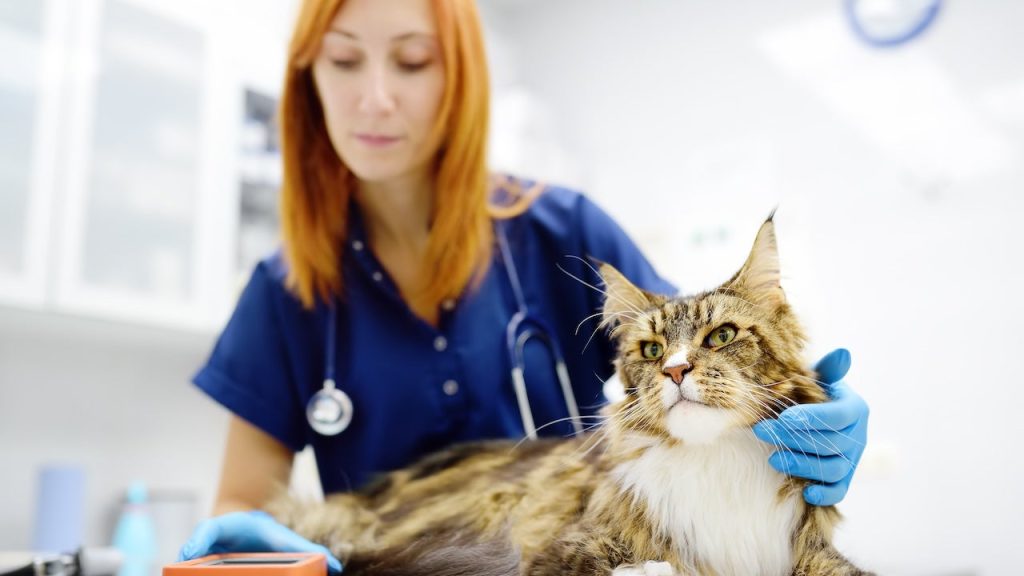Key takeaways
-
Emergency vet care can cost anywhere from $250 to over $10,000, depending on the nature of the emergency and the treatment your pet needs.
- Pet insurance can reduce emergency costs, often covering 70 to 100 percent of the total bill after deductibles.
- Uninsured pet owners may have difficult choices to make, as emergency bills can range from a few hundred to several thousand dollars.
- There are other ways to save for emergency vet visits if pet insurance isn’t right for you.
- Emergency vet care can cost anywhere from $250 to over $10,000, depending on the nature of the emergency and the treatment your pet needs. Common services like X-rays or surgery can significantly drive up the costs.
- Pet insurance can substantially reduce emergency costs, often covering 70 to 100 percent of the total bill after deductibles. This coverage ensures that pet parents can afford life-saving care without the immediate financial strain.
- Uninsured pet owners may have difficult choices to make, as emergency bills can range from a few hundred to several thousand dollars.
- Pet insurance may not be the best financial fit for everyone. Other options include pet savings accounts, veterinary financing programs and credit cards designed for medical emergencies.
Most pet owners will tell you that having a pet is one of the most rewarding experiences in life. But they’ll also tell you that it comes with serious responsibilities. You never know when an emergency might strike — your cat might jump off the bookshelf and break a leg or your dog could eat something dangerous during a walk. The next thing you know, you’re at the vet, facing an unexpected (and often hefty) bill. This is where pet insurance comes in.
A good pet insurance policy can act as a financial safety net that softens the blow of unexpected vet bills. Unfortunately, some pet owners aren’t aware of just how expensive emergency care can be and find themselves financially unprepared when Fido or Mittens need emergency vet care.
To help you decide if pet insurance is worth it, look at the cost of emergency vet care, see how pet insurance helps and explore other ways to handle sudden pet health crises.
The costs of emergency vet care
Emergency vet care is one of pet ownership’s most unpredictable and stressful aspects. The costs can fluctuate widely depending on factors such as the nature of the emergency, the treatment required and where you live.
For example, treating minor emergencies like vomiting or diarrhea could cost between $600 and $1,700, but more severe cases requiring surgery, such as intestinal obstructions or dog bite wounds, can run from $3,000 to $10,000 or more. And that’s not to mention hospitalization and monitoring, which can cost up to $3,500 for five days.
Other common emergency treatments include:
- Blood work: $80–$200
- Hospitalization: $600–$3,500
- Surgery: $1,500–$5,000+
- Ultrasounds: $300–$600
- X-rays: $150–$250
Costs rise when advanced treatments like MRIs or emergency surgeries are required. For example, an MRI scan can cost between $2,500 and $3,500, and emergency surgery to treat a condition like bloat in dogs could range from $500 to upwards of $5,000.
Most pet owners are familiar with the routine costs of veterinary care, like vaccinations and check-ups. Many get preventive or routine care add-ons or riders to help cover these anticipated costs.
However, emergencies are a different story. The unpredictability and severity of these emergencies can create unexpected financial strain, catching pet owners off guard. Without a plan or financial safety net in place, you may find yourself unprepared for the high costs of emergency care. This can lead to difficult or heartbreaking decisions about your pet’s treatment, especially when balancing finances and their well-being.
How pet insurance helps with emergency costs
Pet insurance can be a lifesaver when handling unexpected veterinary bills. Most plans will cover a percentage of emergency care costs after you meet your deductible — anywhere from 70 percent to 100 percent of remaining costs. For instance, if your pet requires surgery that costs $3,000, and your pet insurance covers 80 percent after a $250 deductible, you would pay only $800 out of pocket, significantly reducing your financial burden.
Beyond just covering a portion of the bill, pet insurance often gives pet owners peace of mind, making pet insurance worth it for many fur families. Knowing you won’t have to choose between saving your pet’s life and financial stability can reduce the stress of emergency situations.
Pet insurance plans often apply to a wide range of emergencies, from accidents and injuries to sudden illnesses. Depending on the provider, insurance may cover:
- Diagnostic tests like X-rays, MRIs and ultrasounds
- Emergency surgeries
- Follow-up care for specific emergencies
- Hospitalization and medications
The best pet insurance companies allow pet owners to feel financially protected, knowing they won’t have to face large emergency vet bills without help. This security can enable owners to focus on their pet’s recovery rather than the looming financial burden.
Peace of mind doesn’t have to come with a hefty price tag. Some pet insurers make premiums as affordable as possible so that pets can get the care they need. There are also ways to save money on pet insurance without compromising care.
Comparing pet insurance premiums to emergency care costs
On average, pet owners in the U.S. can expect to pay between $17 per month for accident-only coverage and $56 per month for accident and illness coverage for dogs. Pet insurance for cats will set owners back by an average of $10 per month for accident-only coverage and $32 per month for accident and illness coverage.
While these monthly premiums might seem like an extra expense, they may offer substantial savings in the long run. For example, paying $40 monthly for dog insurance adds up to $480 annually. Consider that against the costs of emergency care in a couple of scenarios.
Scenario 1: Dog swallows a foreign object
- Without insurance: If your dog needs emergency surgery to remove a swallowed object, the bill could reach up to $5,000. If you’re uninsured, you will need to pay this amount in full.
- With insurance: For a $5,000 surgery, with 80 percent coverage after a $250 deductible, your out-of-pocket cost would be $1,200, compared to paying the full $5,000 without insurance.
Scenario 2: Dog diagnosed with cancer
- Without insurance: Chemotherapy for a pet can cost between $3,000 and $10,000 depending on the duration and type of cancer. You’d be liable for the full amount the vet charges you.
- With insurance: If your pet’s chemotherapy costs $4,000, and your insurance covers 80 percent after a $500 deductible, you’d pay around $1,300 out of pocket, while insurance would cover the remaining $2,700.
How to cover emergency costs without insurance
For pet owners who don’t have insurance, there are alternative ways to cover emergency veterinary bills. Here are some of the most common options:
- Crowdfunding: When facing a particularly large emergency bill, some pet owners turn to crowdfunding platforms like GoFundMe to raise funds for their pet’s treatment. While this can help cover unexpected costs, it’s not a guaranteed solution and can take time to generate funds.
- Medical credit cards: Some pet owners use credit cards specifically designed for medical expenses, like CareCredit. These cards can offer deferred interest or low-interest financing on veterinary bills, making them a viable option in emergencies.
- Personal loans: Personal loans from your bank or credit union may be an option if you don’t have immediate savings or other financing options available.
- Pet savings accounts: Setting aside a specific amount each month for potential emergencies is a proactive way to ensure you have funds ready when needed. This approach requires discipline and time to build up savings, but it can be helpful for those who prefer to self-insure.
- Veterinary financing programs: Many vets offer financing options through third-party companies like CareCredit. These programs typically offer interest-free or low-interest payment plans for medical emergencies, allowing you to pay off vet bills over time.
These options can offer temporary relief, but they still require careful planning and a proactive approach. Saving even a small amount each month can build a safety net, ensuring you are prepared if an emergency strikes. However, unlike insurance, these methods may still leave pet owners facing the full financial burden of emergency care.
The bottom line
Emergency vet care is an inevitable part of pet ownership, and the bills can pile up fast. That’s where pet insurance steps in, helping to ease the financial strain by covering a significant portion of the costs after deductibles.
If insurance isn’t the right fit for you, consider whether a pet loan is the answer. Otherwise, creating a pet savings account, looking into veterinary financing options or using medical credit cards can be a lifeline. Being prepared for these emergencies can make all the difference when your pet needs you most.
Frequently asked questions
Read the full article here










